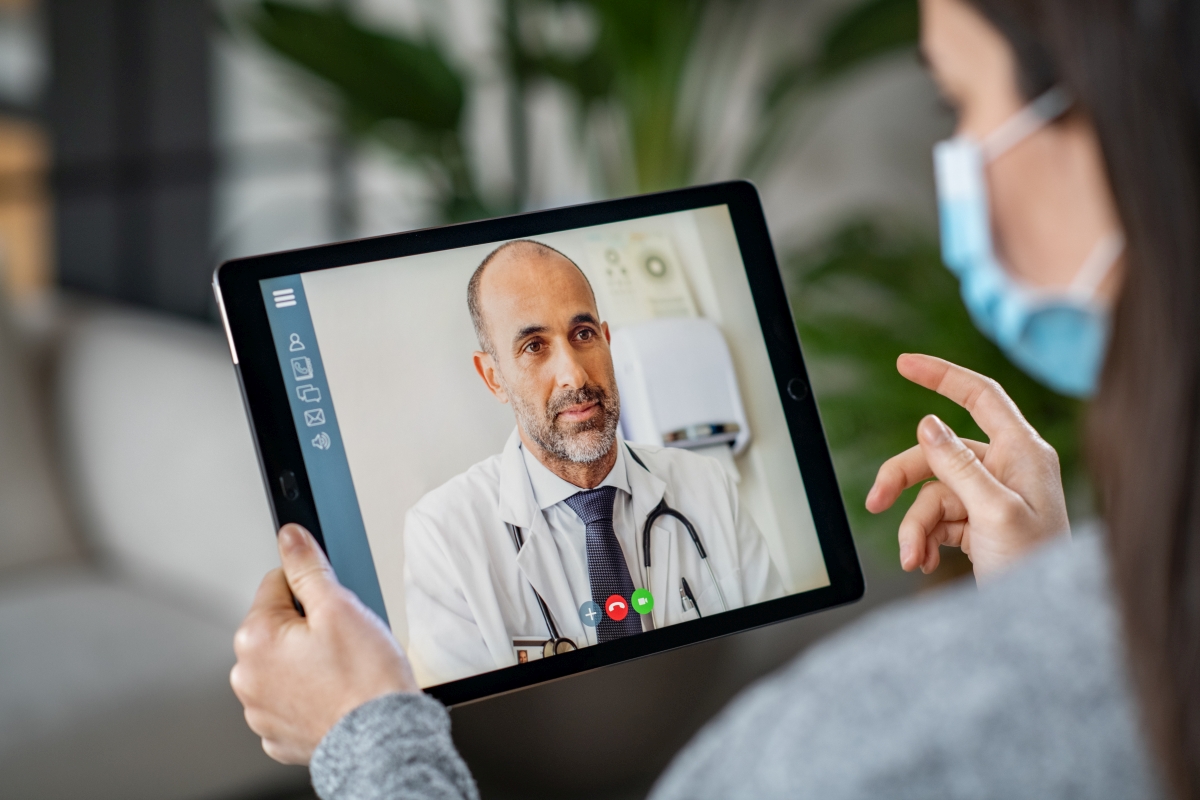Top Reasons to Choose Teledoctors for Telemedicine Services
Top Reasons to Choose Teledoctors for Telemedicine Services
Blog Article
Teledoctors: Connecting the Gap Between People and Doctor
The emergence of teledoctors stands for a substantial shift in the health care landscape, providing services to long-standing accessibility concerns encountered by service providers and clients alike. By integrating telemedicine into traditional practices, medical care systems can get to remote and underserved populaces, supplying vital medical appointments without the obstacles of distance and travel. This standard shift not only boosts client engagement however likewise optimizes resource allocation for carriers. Nonetheless, the widespread fostering of teledoctors elevates essential questions concerning the sustainability of such methods and the implications for future medical care shipment. What obstacles lie in advance in ensuring this version's effectiveness and equity?
Increase of Telemedicine

The surge of telemedicine is likewise fueled by the need for cost-effective healthcare. Medical care systems around the world are under stress to minimize costs while maintaining quality treatment, and telemedicine supplies a sensible option. By decreasing the requirement for physical sees, telemedicine minimizes overhead costs for healthcare centers and eventually lowers the economic problem on clients.
Furthermore, the COVID-19 pandemic served as a catalyst, increasing the adoption of telemedicine practices. Social distancing actions and the requirement to reduce exposure danger necessitated a change towards remote consultations, motivating regulative bodies to adapt and sustain telehealth solutions. This shift has not only tried and tested telemedicine's efficacy yet likewise its potential to progress as a staple component of contemporary healthcare systems.
Advantages for Clients
Mostly, telemedicine boosts accessibility, enabling individuals in underserved or remote locations to consult healthcare companies without the demand for extensive travel. Telemedicine also offers clients the ease of receiving medical guidance and treatment from the comfort of their homes, reducing the time and cost linked with traveling to a healthcare center.
Furthermore, telemedicine sustains connection of care by facilitating normal follow-ups and monitoring, which are critical for managing persistent problems. Individuals can conveniently set up consultations and accessibility health care solutions outside typical workplace hours, fitting their busy way of livings. This adaptability causes enhanced patient involvement and adherence to therapy plans, potentially leading to better wellness results.
Additionally, telemedicine can aid alleviate the danger of infection transmission, a concern enhanced by the COVID-19 pandemic. By reducing the need for in-person brows through, individuals can avoid jampacked waiting spaces and reduce direct exposure to contagious ailments. Eventually, telemedicine encourages individuals by providing prompt, efficient, and customized healthcare solutions.
Advantages for Providers
For doctor, telemedicine supplies considerable benefits that enhance the effectiveness and reach of their practice. By leveraging electronic modern technology, companies can expand their services to a more comprehensive demographic, view it consisting of those in underserved or remote areas. This not just alleviates geographical barriers yet also enhances person retention and acquisition by making health care extra easily accessible.
With telemedicine, the need for physical space reduces, allowing service providers to conserve on real estate and operational expenses. This versatility can lead to enhanced client examinations per day, consequently improving profits capacity.
Telemedicine likewise fosters a more collaborative setting for medical care suppliers. teledoctors. It makes it possible for seamless sharing of client information amongst professionals, enhancing diagnostic accuracy and therapy results. Additionally, digital systems can integrate with electronic wellness documents (EHRs), enhancing information precision and improving administrative jobs
Additionally, telemedicine improves person satisfaction, which is critical for supplier credibility and success. By offering prompt and hassle-free care, providers can boost individual commitment Home Page and engagement, even more strengthening the provider-patient relationship.
Conquering Obstacles
While telemedicine supplies numerous advantages for health care providers, it also provides difficulties that require mindful consideration. Healthcare companies need to stick to rigorous regulations like HIPAA to safeguard sensitive info, consequently calling for financial investment in safe and secure platforms and ongoing staff training. teledoctors.
Another challenge is the digital divide, which can hinder access to telemedicine services. Not all patients have equal access to the necessary innovation or web connection, specifically those in underserved or country locations. This difference can exacerbate existing health care inequalities, making it essential for service providers to explore alternate services, such as partnerships with neighborhood organizations, to bridge this void.
Furthermore, there are limitations in conducting physical exams from another location. Certain conditions need in-person analysis, highlighting the need for a hybrid design that incorporates telemedicine with conventional sees. Suppliers have to navigate these challenges by creating procedures to recognize when telemedicine is proper and making sure smooth transitions between in-person and virtual treatment.
Future of Medical Care
The future of medical care is poised for a transformative evolution, driven by the fast assimilation of technology and technology. This not just boosts individual comfort but also broadens access to health care, specifically in country and underserved locations.
Expert system (AI) and maker understanding are also readied to play essential functions. These modern technologies can analyze vast amounts of data, offering predictive insights into individual health and wellness, boosting analysis precision, and individualizing therapy strategies. AI-driven devices can increase doctor' capabilities, resulting in more informed decision-making and better client results.
Furthermore, wearable innovation and Net of Clinical Things (IoMT) devices are changing patient engagement and positive health and wellness monitoring. These tools enable constant health and wellness tracking, permitting for very early discovery of timely interventions and prospective problems.
As these innovations remain to breakthrough, they assure to develop an extra reliable, accessible, and patient-centric healthcare system, ultimately bridging the gap in between patients and healthcare providers. - teledoctors
Conclusion
Teledoctors are transforming healthcare by significantly enhancing accessibility and efficiency via remote appointments. This innovation sustains individuals in underserved areas by offering timely clinical recommendations without needing physical check outs, therefore enhancing patient engagement and connection of care. Doctor gain from extra effective time administration and enhanced cooperation chances. Despite obstacles such as technical barriers and governing problems, discover this info here the future of medical care appears increasingly comprehensive and efficient as a result of the integration of telemedicine right into standard care designs.

As telemedicine proceeds to reshape health care distribution, clients stand to get significantly from this improvement. Primarily, telemedicine improves access, allowing individuals in remote or underserved areas to speak with healthcare service providers without the need for substantial travel. Telemedicine additionally provides clients the comfort of receiving clinical recommendations and treatment from the comfort of their homes, decreasing the time and expense associated with traveling to a health care center.
Inevitably, telemedicine encourages patients by offering timely, effective, and individualized medical care solutions.
Report this page